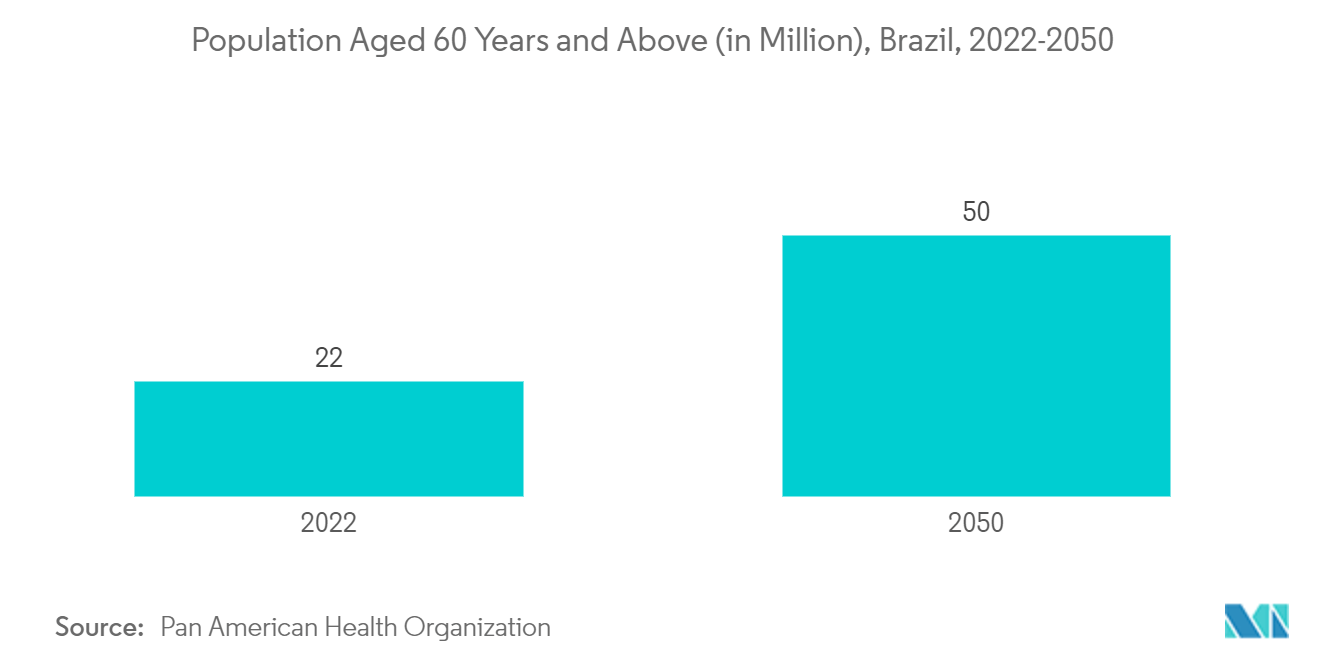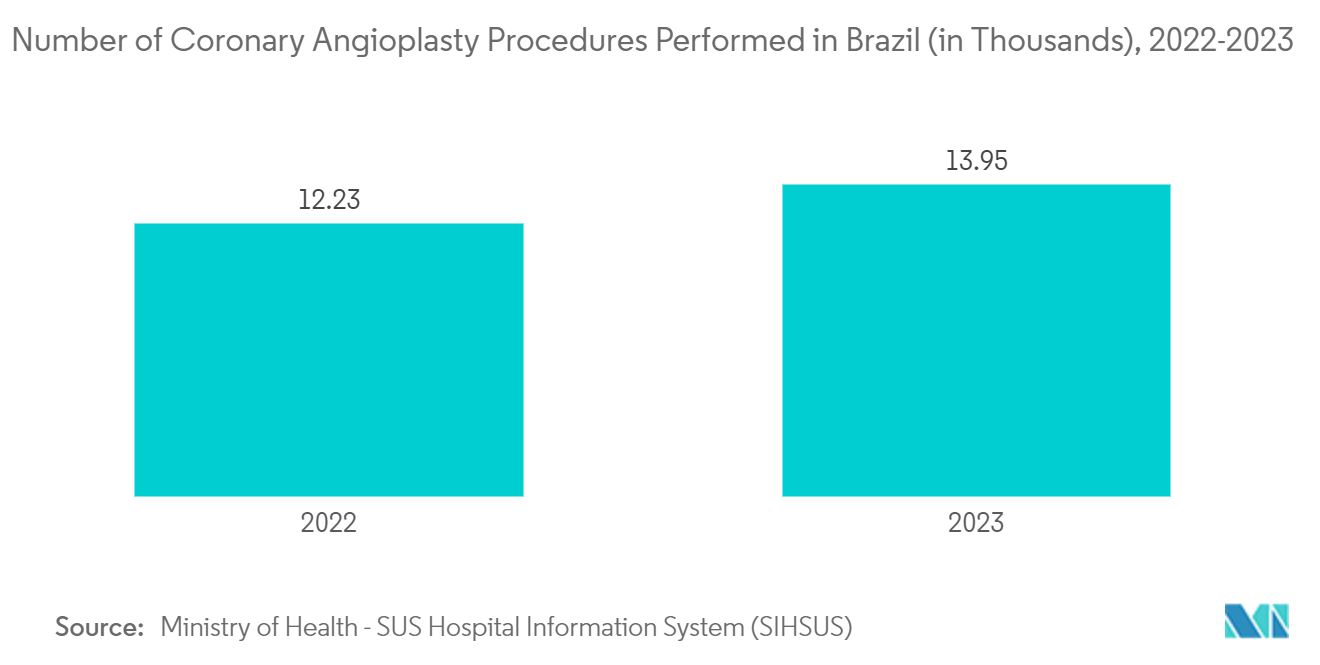Market Trends of Brazil Angioplasty Devices Industry
The Stents Segment is Expected to Witness Significant Growth During the Forecast Period
- Angioplasty stents are small, mesh-like metal tubes used to treat narrowed or blocked arteries in a medical procedure called angioplasty. Stents can be made of various materials, such as stainless steel, cobalt-chromium, or platinum-chromium alloys, and they come in different sizes and designs to suit different patient needs. The angioplasty stents segment in Brazil is expected to have significant growth due to factors like increasing incidences of cardiovascular diseases, greater adoption of angioplasty stent procedures, and technological advancements in angioplasty.
- In Brazil, there is greater adoption of angioplasty stents under implant procedures, which is expected to drive segment growth during the study period. For instance, as per the data published by the National Implant Registry (RNI) in 2023, 12,363 implant records were reported in Brazil, out of which 12,058 were coronary angioplasty for stent placement. This shows that 97% of stent placements in overall implant procedures are significant and likely to continue the same, which is expected to boost the market’s growth during the study period.
- Furthermore, in Brazil, there is a high burden of cardiology emergency cases associated with the geriatric population, which include ischemic heart disease cases, which is expected to increase the demand for angioplasty stents. For instance, the hospitalization data from the SUS (Unified Health System) in 2022 reported that 83.37% of hospitalization cases in the cardiology area occurred due to emergencies in Brazil, which include ischemic heart diseases, angina, and valvular heart disease. Hence, the high burden of cardiology emergency cases greatly increases the demand for stent usage, which is expected to boost the segment’s growth during the study period.
- The approvals and launches of new products in the country increase the availability of stents, which is expected to boost segment growth during the forecast period. For instance, in October 2023, the National Health Surveillance Agency (ANVISA) approved an innovative treatment, ABRE Stent, for Deep Vein Thrombosis (DVT), a serious and potentially fatal condition. The main advantage of this stent is its flexibility, which increases its use for treatment.
- Thus, owing to the abovementioned factors, such as the high burden of cardiovascular diseases, the growing geriatric population, greater adoption of angioplasty stent procedures, and new product approvals and launches, the segment is expected to grow significantly during the forecast period.

Coronary Angioplasty Segment Expected to Witness Healthy Growth During the Forecast Period
- Coronary angioplasty, a procedure aimed at widening narrowed or blocked heart arteries, involves inserting a catheter with a deflated balloon. Upon inflation, the balloon compresses plaque buildup, enhancing blood flow. This procedure is primarily used to address coronary artery disease, alleviating symptoms like chest pain and reducing the risk of heart attacks. Some key factors contributing to the growth of coronary angioplasty in Brazil include the rising incidence of coronary artery disease, which is attributed to factors like poor diet, obesity, and stress. Additionally, heightened awareness of heart conditions and technological advancements in angioplasty procedures are set to propel the segment's growth.
- The Ministry of Health in Brazil has identified several risk factors for cardiovascular diseases, including coronary artery disease. These risks encompass smoking, high cholesterol, hypertension, obesity, stress, depression, and diabetes. Given its association with a heightened risk of coronary artery disease, the escalating obesity rates in Brazil are poised to drive the demand for coronary angioplasty. Notably, the World Obesity Atlas projected Brazil to face a 41% obesity rate by 2035, highlighting the situation's urgency. From 2020 to 2035, adult obesity in Brazil is projected to witness an annual growth rate of 2.8%, a concerning statistic that directly correlates with the rising demand for coronary angioplasty.
- Moreover, advancements in coronary angioplasty procedures, such as the innovative intracoronary lithotripsy performed at Brazil's Hospital Márcio Cunha in August 2023, enhance the treatment's efficiency. Such advancements are anticipated to drive the demand for such procedures. Furthermore, the availability of affordable or accessible cardiovascular healthcare services, as highlighted by the Ministry of Health in September 2022, is expected to boost the usage of coronary angioplasty devices, further fueling the segment's growth.
- Similarly, initiatives like the one by Seconci-MG in May 2024, emphasizing regular consultations with cardiologists for heart and blood pressure checks, play a crucial role. By ensuring early diagnoses and promoting treatments like coronary angioplasty, these efforts directly contribute to the segment's growth.
- Therefore, given the rising risk of coronary artery disease, increasing awareness of coronary angioplasty, and technological advancements in this field, the segment is poised for significant growth in Brazil during the forecast period.


